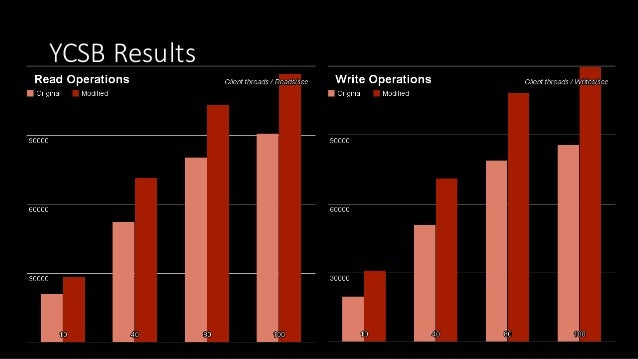

Query the job record in a storage table named ycsbbenchmarkingmetadata using az storage entity query. Operation,Count,Throughput,Min(microsecond),Max(microsecond),Avg(microsecond),P9S(microsecond),P99(microsecond) You should now have a CSV dataset with aggregated results from all the benchmark clients.

Open the aggregation.csv blob and observe the content. Observe the output and diagnostic blobs for the tool. Navigate to the storage container in the same account with a prefix of ycsbbenchmarking-*. It can take approximately 20-30 minutes for the job to finish. Now, you use an Azure Resource Manager template to deploy the benchmarking framework to Azure with the default read recipe. Using the az cosmosdb sql container create command, create a new container with the following settings: Setting resource-group $sourceResourceGroupName \ Using the az cosmosdb sql database create command, create a new database with the following settings: Setting # Variable for storage account connection string # Variable for Azure Storage account name # Variable for API for NoSQL endpoint URI # Variable for resource group with Azure Cosmos DB and Azure Storage accounts # Variable for Azure Cosmos DB for NoSQL account name Existing Azure Cosmos DB for NoSQL account primary key named cosmosPrimaryKey.Existing Azure Cosmos DB for NoSQL account endpoint URI named cosmosEndpoint.Name of your second empty resource group named targetResourceGroupName.Name of your first resource group with resources named sourceResourceGroupName.Name of your existing Azure Cosmos DB for NoSQL account named cosmosAccountName.If you haven't already, sign in to the Azure CLI using the az login command.Ĭreate shell variables for the following values:

In the New Container dialog, create a new container with the following settings: Setting On the Data Explorer page, select the New Container option in the command bar. In the resource menu, select Data Explorer. Navigate to your existing API for NoSQL account in the Azure portal. Create a resource group.įirst, you create a database and container in the existing API for NoSQL account. Make sure you note the connection string for the storage account.Make sure you note the endpoint URI and primary key for the account.An Azure account with an active subscription.In this guide, you use this benchmarking framework to implement a read workload to familiarize yourself with the framework. In Azure Cosmos DB for NoSQL, the framework implements best practices for the Java SDK and uses the open-source YCSB tool. The benchmarking framework for Azure Databases simplifies the process of measuring performance with popular open-source benchmarking tools with low-friction recipes that implement common best practices. One of the key factors to picking a database is the performance of the database or service, but benchmarking performance can be cumbersome and error-prone.
#NOSQL BENCHMARK TESTS DOWNLOAD#
Download and read the comparative benchmarks to find out more about why MongoDB stands out in a crowded field of NoSQL database solutions.There are more choices, now than ever, on the type of database to use with your data workload. When you’re looking to invest in the innovations of NoSQL for your Big Data applications, there are almost too many options to choose from but evaluating options based on performance is a good place to start. MongoDB came out far ahead of the others in terms of throughput and latency across a number of configurations.
#NOSQL BENCHMARK TESTS SOFTWARE#
In addition, United Software Associates, an independent third party firm, tested MongoDB performance against other leading NoSQL vendors Couchbase and Cassandra. We ran tests using YCSB, a popular testing software, and found between 7 and 10 times better performance from this version as compared to the prior version. In fact, the latest version of MongoDB, 3.0, introduced a major enhancement to performance through the WiredTiger storage engine. MongoDB, the world’s leading NoSQL database, is built to deliver high performance at scale for Big Data applications. As part of this mandate, the ops team typically establishes benchmarks as a gauge for system performance and to offer insight into which elements need to be tweaked to either prevent system failure or to improve performance even more.

Operations teams are responsible for monitoring systems for performance and high availability. The ability to deliver on that promise is just one reason why NoSQL databases have seen widespread adoption in recent years.Įnterprises need their applications and their databases to run smoothly or else they could run the risk of customer dissatisfaction, lost revenue, or worse. NoSQL databases offer high performance at scale for less cost than older relational technology.


 0 kommentar(er)
0 kommentar(er)
